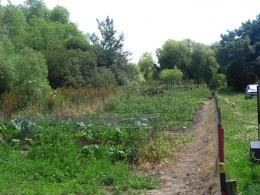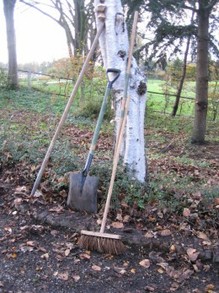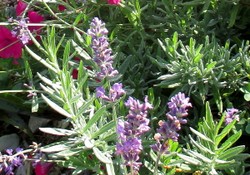Your flower garden is probably looking reasonably okay, certain shrubs will be in bloom and the foliage of others will be turning to rich red and gold autumn colours. There is still plenty that you can do to prepare the flower garden for the winter though, and this in turn will make your life easier in the spring.
1) Continue to rake falling leaves into heaps, before either composting them in their own heap (because they take a year to break down fully which is slower than other materials), or placing them loosely in black bin sacks, tying the neck of the bags and then using a garden fork to puncture the bag several times. These bags of leaves can be stacked up in a corner of the garden and forgotten about for a year. When the year is up you will have a lovely rich leaf mould in the bags, an excellent mulch for around your shrubs and trees.
2) Take this opportunity to mend any bare patches in your lawn, ideally using patches of turf cut to size.
3) Give the lawn a final mow over before raking vigorously with lawn rake to remove any moss and decaying material.
4) Use a lawn edger or the back of a spade to sharpen up the edges of any flower beds where the lawn has spread into them. Turn around the piece of removed turf so the the inner section now faces outwards. Fill in any holes in the turf with soil and re-seed them.
5) Go across your lawn spiking it with a garden fork to a depth of about 8cm about 15cm apart. This will aerate the soil and improve surface drainage. If you have a heavy clay soil you can go a step further and use a hollow-tine spiker that will core out each hole.
6) If you have a sandy soil you can top dress it with sieved topsoil or a garden centre proprietary product at approximately one bucketful per square metre. Use a garden besom broom or a lawn rake to work it into the turf. You can also add grass seed to the mixture if your lawn is thin or sparse.
7) After a rainy period you can apply an autumn feed all over the lawn. This will help the lawn to toughen up without encouraging soft lush growth that will need further mowing.
8) Give your hedges a final trim before the weather gets too cold. If you leave it too late you risk frost damage.
9) Cut off any suckers developing around the base of trees.
10) Disconnect your hose from the taps and store away to avoid the water inside freezing and damaging it.
11) Hoe away any weeds that are growing in the gravel paths throughout your garden.
12) Protect any tender plants or shrubs by either moving them indoors, or by wrapping them in horticultural fleece.
13) Cover your garden ponds in fine netting to keep out leaves and other debris.
14) Prune appropriate shrubs carefully, making sure you prune to an outward facing bud.







 Dracula's Dream Dessert for Halloweenon 06/02/2011
Dracula's Dream Dessert for Halloweenon 06/02/2011
 How to Make a Tree Devil Mask for Halloweenon 06/02/2011
How to Make a Tree Devil Mask for Halloweenon 06/02/2011


Comments
Glad these were useful to you Sheilamarie, and hope you can put the tips to good use :)
Great tips for putting your garden to bed. Thanks for the reminders.